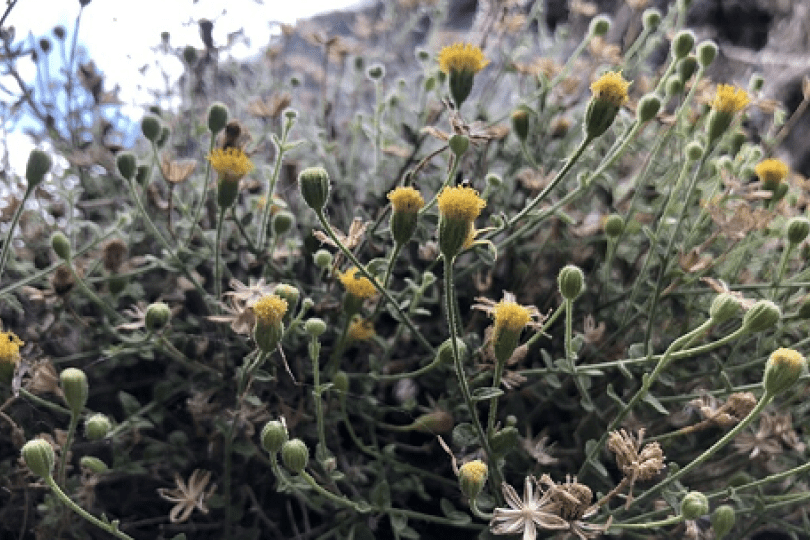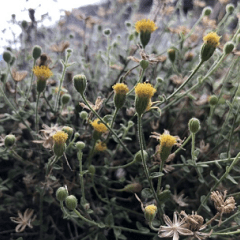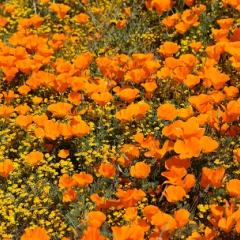California protects native daisy after research and advocacy by Switzer Fellows
Editor’s note: The following content is lightly edited from a News Release by the California Native Plant Society.
On October 11, 2023, the California Fish and Game Commission voted to permanently protect Inyo rock daisies as a threatened species under the California Endangered Species Act.
“This vote is a huge victory for these special wildflowers,” said botanist and Switzer Fellow Maria Jesus, whose field surveys document the plant’s current range. “With the threat of a massive gold mine looming on the horizon, this rare daisy now has help from the state of California to prevent it from sliding into extinction.”
The unanimous vote grants the wildflowers threatened status under the California Endangered Species Act. This gives Inyo rock daisies (Perityle inyoensis) legal protections and requires state and local agencies to manage threats to them.
In February 2022 Jesus, the Center for Biological Diversity, and the California Native Plant Society petitioned the commission to protect the daisies. Today’s vote affirms the California Department of Fish and Wildlife’s recommendation to protect the plant as a threatened species.
The Inyo rock daisy is a rare wildflower found only at the highest elevations of the southern Inyo Mountains, between the Eastern Sierra and Death Valley National Park. It lives on ancient carbonate bedrock on Conglomerate Mesa, which is threatened by gold mining.
“What’s more valuable than gold? Protecting life from extinction,” said Switzer Fellow Nick Jensen, conservation program director at the California Native Plant Society. “We are in a global extinction crisis, and California has more imperiled species than any state. It would be an outrageous time to allow gold mining operations to destroy such important habitat. We’re grateful that the commission’s action gives the Inyo rock daisy a fighting chance.”
In March a separate petition submitted to the U.S. Fish and Wildlife Service under the federal Endangered Species Act received a positive finding, kicking off a year-long review to determine if the daisies should have permanent federal protection.
In 2018 a Canadian mining company claimed to have found evidence of a large gold deposit in the area. The U.S. Bureau of Land Management has been working with the company to do gold mining exploration in the plant’s habitat. If they find commercially viable quantities of gold and propose developing an open-pit mine in the Inyo rock daisy’s core habitat, the state has authority to safeguard the daisies and their habitat.
Most of the wildflower’s range is designated as part of the National Conservation Lands System, but these conservation lands remain open for development under the antiquated 1872 Mining Law. This area includes the Cerro Gordo and Conglomerate Mesa areas of critical environmental concern, which were designated to protect numerous sensitive plant species, Joshua tree woodlands, and other nationally significant values, including cultural ones.
Blooming during the heat of the summer when other desert plants have gone dormant, the Inyo rock daisy sports bright yellow flowers that attract many insect visitors. The pollinators are a critical part of the wildflower’s life cycle since pollen from distant flowers is needed for reproduction.
In addition to habitat loss from an open-pit mine, mining operations would likely harm plant reproduction by fragmenting habitat and driving away pollinators. The daisy is also threatened by invasive plants, climate change and harmful genetic consequences because of its small population size.




